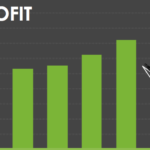Topics:
Never Miss a Beat - Get Updates Direct to Your Inbox
FILTER:


Tips On How To Identify Risk In Your Online Business
By Quiet Light
One of the great appeals of buying a web based business is the ability to have relatively high cashflows without the need for significant physical infrastructure, staff, or property. Of course, this cuts both ways as one of the most significant risks to buying a web based business is that there is little physical infrastructure, staff, or property.
Because online businesses lack the traditional infrastructure that most ‘traditional’ businesses would have, there is relatively little recovery value if the business fails. For example, if someone buys a website that generates income from Adsense and generates traffic from Google, what are they left with if Google suddenly penalizes the website?
The answer is not much. A website, on its own, has little inherent value. The value of any website is in its ability to offer value to its visitors. Take away the visitors, or take away its ability to offer value and the website becomes worthless.
So it is no surprise that people who buy websites are really quite sensitive to risk – even if the risk is merely perceived and not real. The very perception of risk tends to turn some buyers away and forces others to consider your website less valuable than your personal value of the website.
Eliminating and mitigating risk, both real and perceived, is a key activity to maximizing the value of any business or website. This article will cover exactly how you can do do this.
Here’s The Problem: You Don’t See The Risk
In order to eliminate or mitigate risk, we must first learn how to identify the risk. But this is easier said than done. The fact is, most website owners are blind to the risks of their own business.
There are two reasons for this blindness. First, most people have a tendency to grow numb to nascent risk. Second, many of us tend to bias our successes rather than failures.
Most people grow numb to risk that isn’t realized. The dictionary definition of risk is “the possibility that something bad or unpleasant (such as an injury or loss) will happen”. The key word in this definition is “possibility”.
Risk is, by its definition, always unrealized. Once a risk becomes real, it ceases to be a risk and becomes an event.
As the owner of your website, you may have noticed areas of risk in the past, but over time you grew comfortable with them because the possibility of that risk becoming an event seems less. Our perception gets skewed by the fact that the risk always stays as a risk.
This isn’t a terribly unique phenomena among business owners: as humans, we don’t worry about risk when there is a history that says the risk is pretty small. For example, hundreds of thousands of homes exist on or very near the San Andreas fault that runs through California. For years, scientists have been predicting a massive earthquake. The Uniform California Earthquake Rupture Forecast predicts with 99.7% certainty a major earthquake within the next 30 years.
Yet residents don’t flee. In fact, there are plans for an “instant city” which would accommodate 200,000 more people. The general thought among citizens and public officials is that “it can’t happen here”. From Atlantic Magazine:
There also seems to be a genial agreement among many of the participants that ignorance is bliss. If there is a constant in the political history of earthquakes in California, it is that responsible officials are often eager to promote the idea that it can’t happen here.
The same “ignorance is bliss” attitude among these officials exists in entrepreneurs. Recognizing and planning for the worst is something that we don’t want to do because it is unpleasant to think about.
This is because we tend to bias our successes in any self-analysis. Entrepreneurs tend to be ridiculously optimistic. From Entrepreneur:
This is particularly true, one study found, of serial entrepreneurs, those bootstrapping men and women who we celebrate for persevering in the face of multiple failures. The more times you step up to bat, of course, the greater the likelihood that you’ll hit a home run. But most of us aren’t wired that way. We strike out, so we decide that maybe baseball isn’t for us after all. It’s a reasonable, rational response: we learn from our dismal performance, and are no longer as optimistic about our baseball abilities.
Serial entrepreneurs don’t react like this, though. Failure appears to leave them as optimistic as ever.
While this optimism enables entrepreneurs to boldly pursue an idea in the face of criticism and self-doubt, it also tends to cause a certain blindness among entrepreneurs that makes identifying risk nearly impossible.
A Blast From the Past: Remember the First Panda Update?
Google’s Panda and Penguin updates had a far more profound impact on the industry of buying and selling websites than just about any other event, save the recession, within the past 10 years. With just a few algorithm pushes, buyers (and sellers) learned that search rankings can’t be trusted as the sole source of traffic.
While this seems obvious today, it wasn’t so obvious to website owners at the time. When I would perform an evaluation on an entrepreneur’s website that relied on search, I’d often ask how confident the owner was in those rankings. The typical response I’d hear was “I know my rankings are solid because I’ve never been penalized in the past’.
Many of those sites were victims of future updates.
This attitude that risk is no longer risky because it never becomes an event is like someone who plays Russian Roulette claiming it is a safe game simply because they’ve never been shot before. Past avoidance of risk being realized does not mean the risk is less real.
Five Steps to Identify Risks In Your Business
So while it is important to identify, mitigate or eliminate risks to your website, how can you see the risk if you are programmed to not see risk? Here are 6 steps I recommend business owners take to identify common areas of risk in their businesses.
Identify Single Points of Failure


Other common areas of single points of failure are:
- Only one key vendor (with no possible backup vendors)
- One client, or small group of clients, who make up a significant portion of revenue
- Reliance on a source of revenue that you do not own (Sales through Amazon, Ebay, etc)
- Reliance on one source of traffic that you do not own (a key partnership, search rankings, one social media channel)
The obvious plan to mitigate the risk of a single point of failure is to build redundancies into your business. If you rely on one key vendor, identify potential other vendors that could be used should your key vendor go out of business, decide to compete directly with you, or has an owner who claims to be abducted by aliens (yes, I have a story to tell here – maybe in a future blog post).
Identify Dependencies


For example, in 2007, Quiet Light Brokerage saw a rash of valuation requests for MySpace wallpaper websites that were monetized by Google Adsense. Why? Because MySpace was on the decline. As a result, all of these sites that were build based on the popularity of MySpace were no longer relevant.
Common areas of dependency are:
- Relying on the success or failure of another company
- Seasonal businesses (they are dependent on success in a shorter time period – see this for more on seasonal businesses)
- Businesses that get irregular large sales
Dependencies are often the result of a business that was built out of a mere opportunity. For example, as Twitter grew in popularity website owners demanded easier ways to grow their Twitter followings. As a result, some entrepreneurs saw the opportunity to make money by selling followers which turns into a business that is dependent on Twitter remaining relevant and popular.
If your business has dependency issues, take the time to identify ways you can expand into non-dependent areas. This typically occurs at the strategic level of your business and is not an insignificant undertaking, so be sure to put in ample planning.
Barriers to Entry (or Lack Thereof)


As you evaluate your business for risk, consider how easy it would be for a competitor to take your blueprint and replicate it. Being the first into a particular niche or market has certain advantages as you get the first crack at establishing yourself as the leader. Unfortunately, though, this comes at the cost of not seeing the mistakes others made or identifying what has a history of success in your niche.
Assess Market Conditions


Common areas of market conditions that may be risky are:
- A product that is losing relevance (e.g. buggy whips were popular in the day of the horse and carriage, but lost relevance with the automobile)
- An industry with increasing competitiveness. This is related to the risk above, but when the risk is realized. Crowded niches tend to have lower ceilings for buyers.
- Legislation that impacts your niche. This could be legislation that outlaws your products, or it could be a secondary impact of legislation such as when Amazon removed their affiliate program from various states due to taxation laws.
Evaluate Key Man Risk


Key man risk occurs when your business becomes dependent on the knowledge, skills, or availability of one or a few members of your company. For example, a web design firm in which the owner of the firm does most of the web design would have a significant key man risk as the value that the business delivers is wrapped up in the owner’s design talents.
Other common key man risks may include:
- A single sales person who builds personal relationships with clients
- A blogger who develops a loyal following of their personality
- A podcast host who hosts all of their own podcasts
- SEO who relies on one or few employees
- Any business that places all operations under one employee
To combat key man risks, develop processes that can be replicated. While your business may require talented individuals, you should still have processes which can be learned and transferred should the need arise.
How To Use This Information
Once you’ve identified both perceived and real risk to your business, it’s time to take action and work to mitigate that risk or eliminate it altogether. Keep in mind that the risk doesn’t need to be real per se, it just needs to be perceived.
Knowing how to combat risk should be somewhat straightforward. Where you find risk, move the opposite direction. If you find single points of failure, develop contingency and redundancy plans. If you find dependency issues, develop areas of your business that are not dependent. If you have a lack of barriers to entry, develop unique features in your business. If you have key man risks, develop processes that can be transferred.
Working through these 5 areas of common risk, you’ll benefit from eliminating or mitigating those risks that could sink your business. Better yet, you’ll add significant value to your business.
Comments are closed.







Great Article, thanks for sharing.
Good article. Thanks for the info.
Sufficient loan Limited Company
do you need a private financial
loan company to pay off your debt, or to start up a new business? if yes
contact us today via: [email protected] for more details about
our services thanks.